How Kitchen Layout Makes or Breaks the Kitchen Design
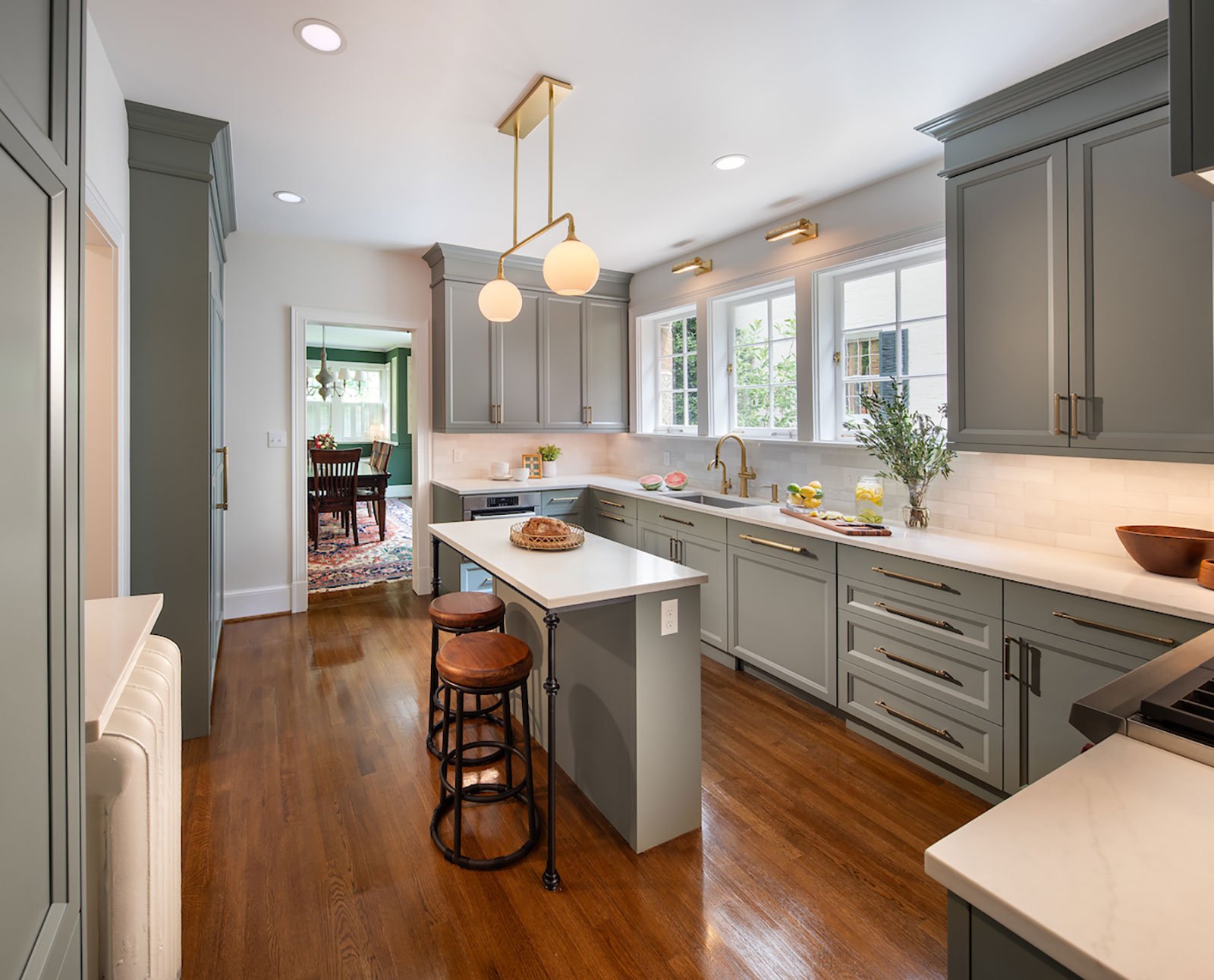
Modern kitchen layout has developed alongside modern kitchen design — which today emphasizes an open plan concept. While many older homes in the metro DC area were built in the 1940s and 50s with the kitchen as a smallish room at the back of the house for meal preparation and food storage only, modern kitchens play a much more expansive, versatile role in the home. People are looking for their kitchen to function as a comfortable place to make a meal and gather together. So the layout, or shape, of the kitchen space has evolved.
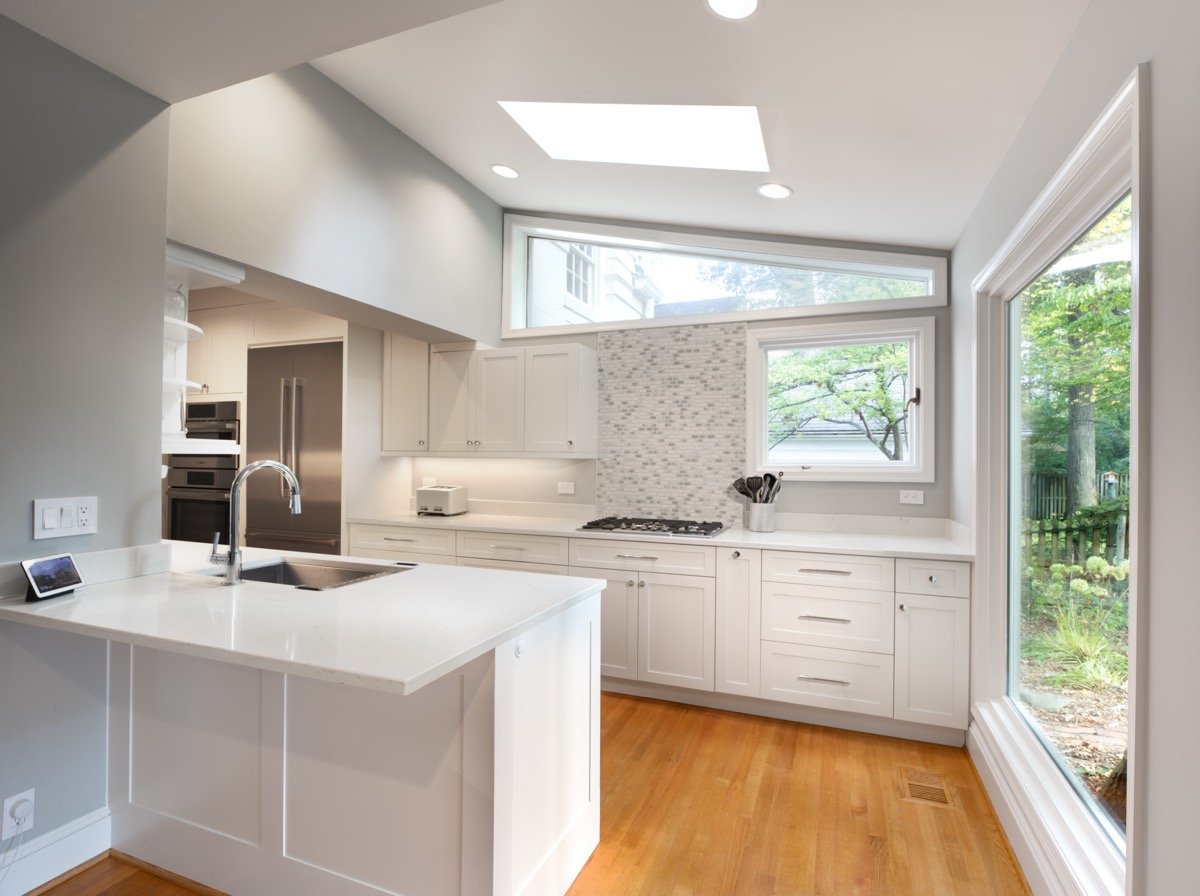
Most of the time when we are asked to renovate a kitchen in a home of this vintage, it is rare for the pre-renovation kitchen to be the original. The original kitchen will have been remodeled in the 70’s or late 80’s. But even at that time, kitchen design as we know it today did not exist–not to mention the absolute explosion of creative finish materials for cabinetry, lighting, tile, flooring, countertops, and appliances. So these 2nd or 3rd generation remodels, although an improvement on the original, do not work at all for the modern homeowner looking for a highly functional “heart of the home” kitchen.
Combining Kitchen Aesthetics and Functionality
Designing a “heart of the home” kitchen layout requires thinking through both aesthetics and functionality. While design magazines and Pinterest boards seduce us with luscious images of beautifully finished kitchens, this is not a room simply to be admired from a distance. It is a workplace, and a place where a lot of a family’s living happens. When creatively designed, it is a space where aesthetics and function combine to create room for food prep, quiet conversation, boisterous entertaining, catching up on work emails, and the latest school project.
Where do designers start in creating this balance between aesthetics and functionality? Believe it or not, it often starts with the appliances. Appliances are a microcosm of the challenges you are facing in a poor kitchen layout. Pre-renovation, a kitchen will often have a refrigerator that is too small for a family’s needs, or it causes congestion in a high-traffic area when the door is open. Another common issue: many kitchens have a standard 30 inch range, but you are imagining all you could do with a few more burners, and maybe a spot to do some grilling. And where is the pot-filler faucet going to go? A good kitchen layout will take these needs into consideration.
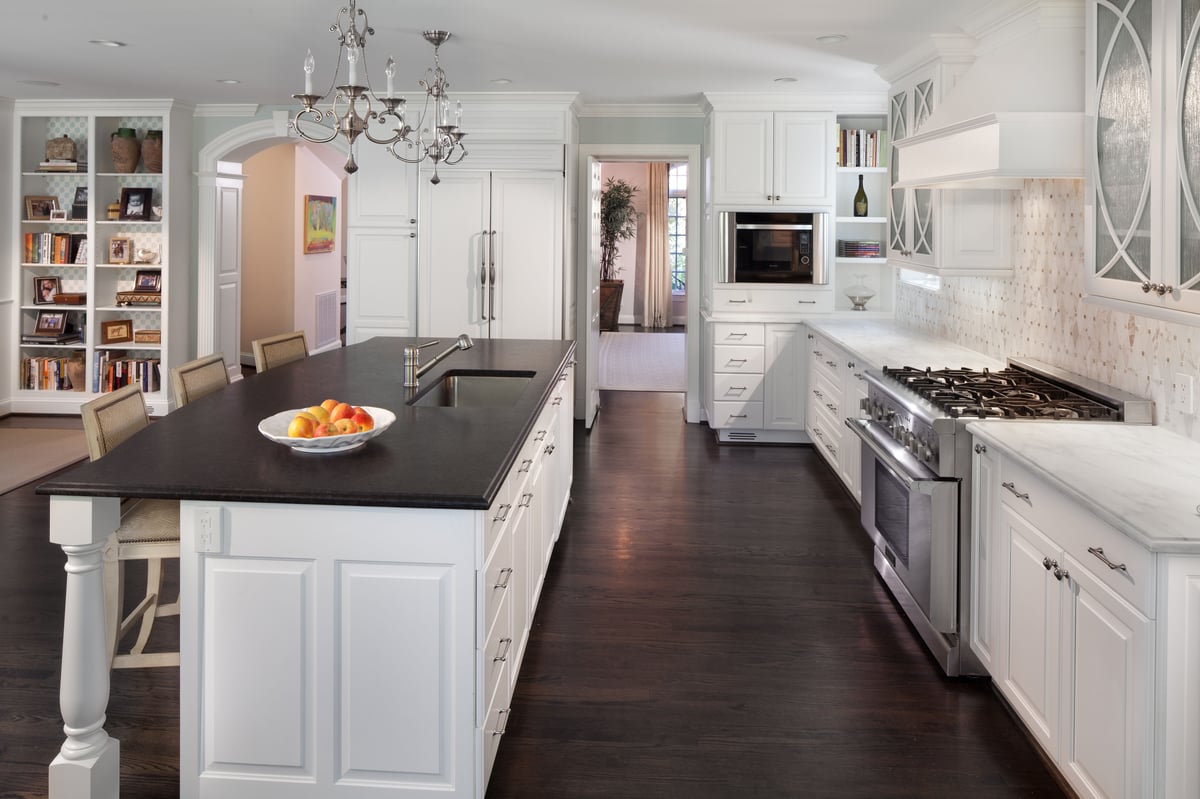
From these examples, you can see how kitchen design should begin with an inventory of the practical needs you have as the homeowner combined with a thorough assessment of the functional assets and limitations of the space to be remodeled. In kitchen design, aesthetics and functionality work together and are indivisible.
The Best Kitchen Layout
The best kitchen layout is the one that seamlessly blends into the physical characteristics of the space. In other words, the room size and its relationship to adjoining rooms and the location of interior and exterior doors and windows will determine a kitchen layout that best defines task areas and accommodates circulation patterns.
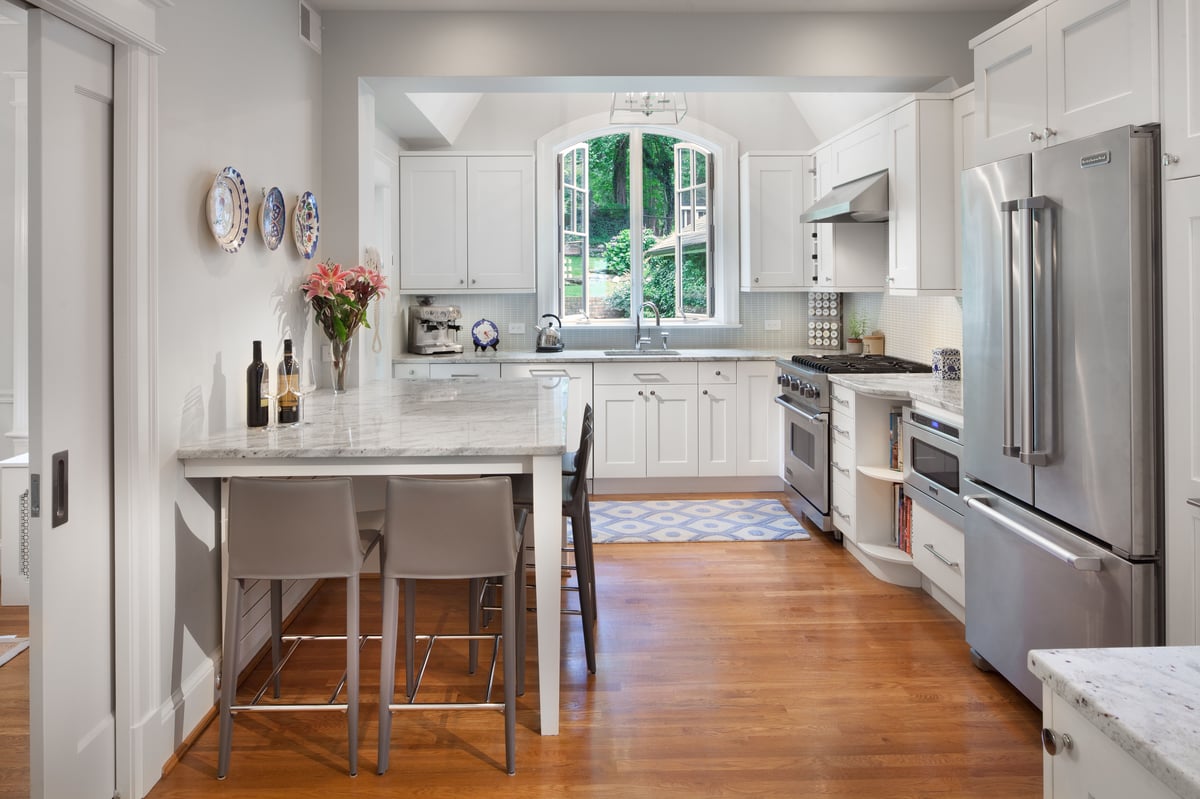
That ideal is well and good, but in many DC area homes space is at a premium. So while, for instance, a kitchen island is a great way to create a workspace and room for kids or guests to sit at a counter area, making an island a reality will have implications on the budget and scope of work. Ideally you want as a minimum between 39 to 42 inches from the counter edge of your perimeter cabinets to the counter on your island. More space is even better, but it all has to be proportional.
Creating space for an island might require moving or removing a wall, which will add to the budget. Designing a layout that blends in requires thinking of all these variables, and meeting your needs and desires within your budget. There are always creative solutions to these kinds of challenges. In one recent kitchen design, we added what we’re calling an island, but with limited space between countertops, it’s more of a baker’s table. Added touches make all the difference. We are using wrought iron legs and have space for a few stools where the kids can sit. It has turned into a great functional space that fits the overall layout.
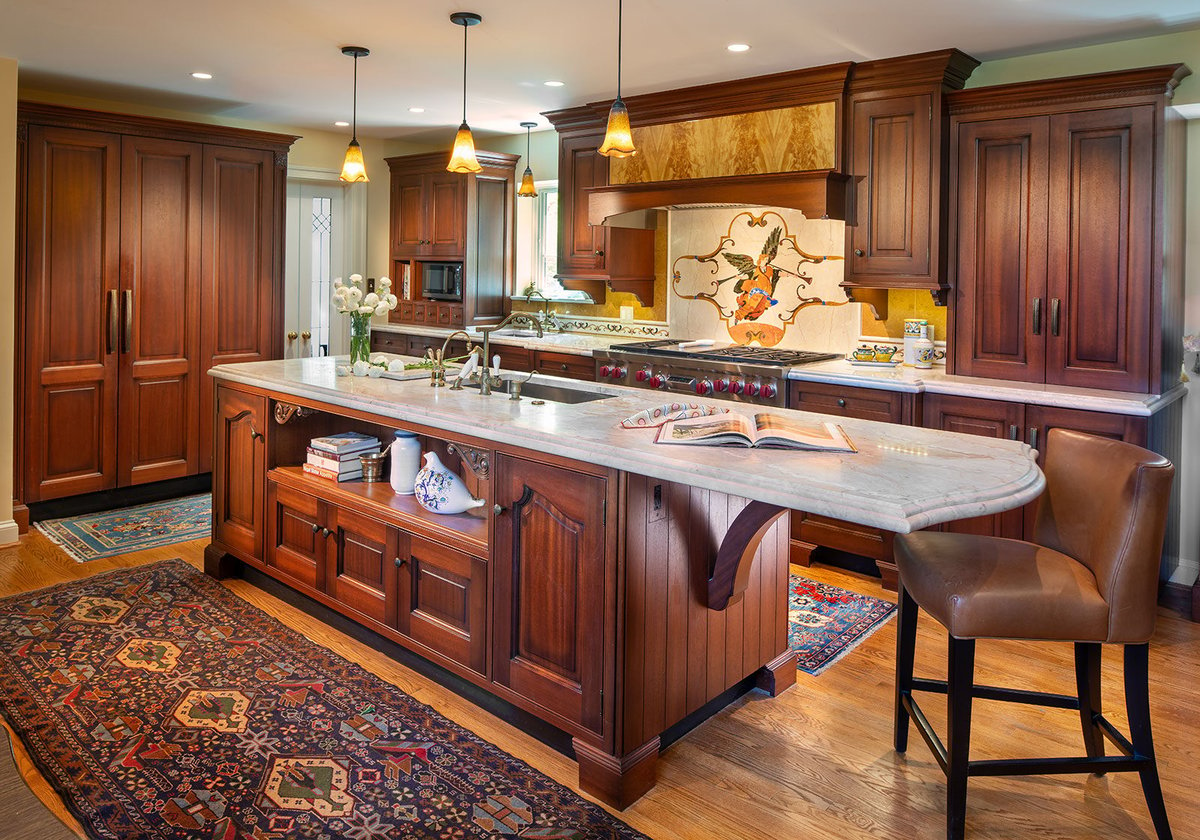
Kitchen Task Areas and Workflow
Defining task areas and creating sensible workflow is the indelible sign of a good layout. If the kitchen is pretty but the logic of the task areas is off, it’s not a good kitchen design. Good kitchen design creates a flow where refrigerator, range, and sink are easily accessible and in proximity, while allowing for the inevitable foot traffic to manage the space along with the cooks.
Workflow relates to the order in which kitchen task centers are utilized in food preparation.
Let’s take it down to the basics, which is where kitchen layout is a make or break proposition. Here’s what generally happens in a kitchen and what needs to be accommodated by excellent layout and workflow patterns: Food and supplies are brought into a kitchen. Then these items are stored in the pantry and refrigerator. At mealtime, foods and supplies are selected and set up at the prep center. The meal is cooked and served. After time spent with people gathered together — hopefully free from cell phone usage — dishes, utensils, etc. are cleaned and leftovers put away.
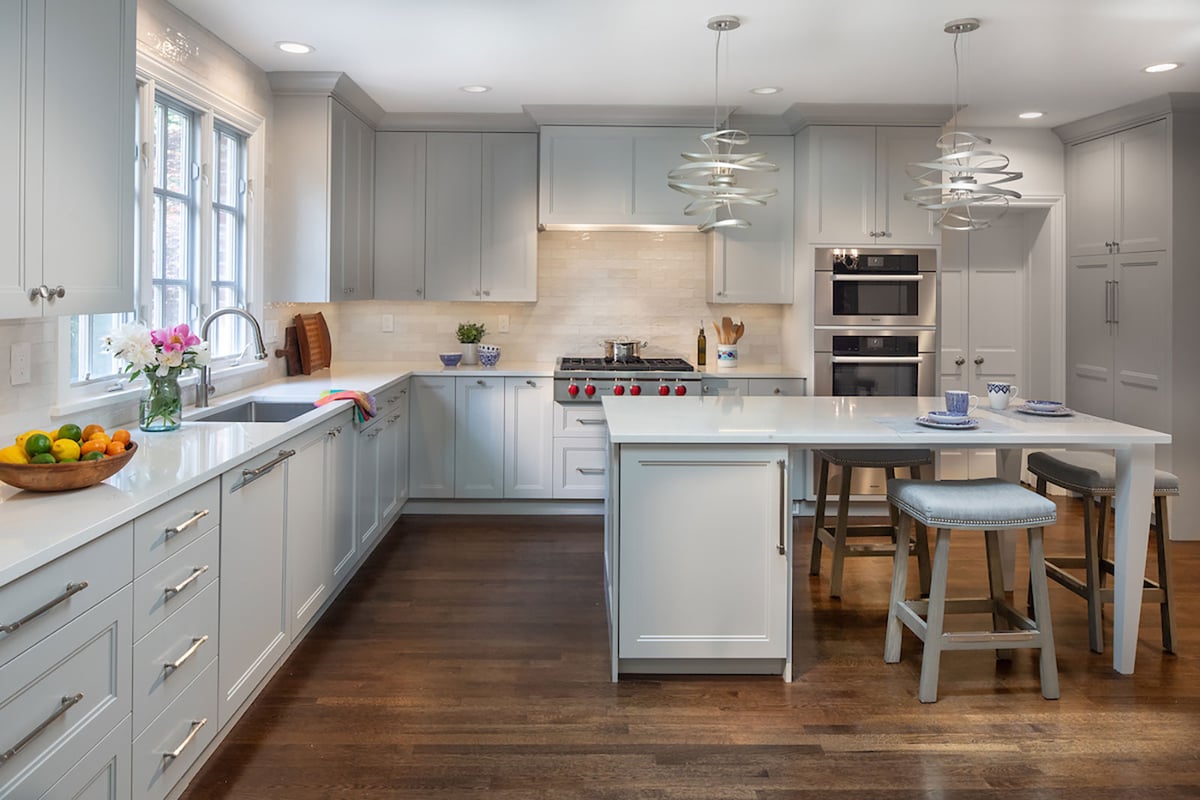
Good kitchen design also means those who are cooking can get the job done while other activities are happening in the kitchen. One recent client was driven to distraction by people forever passing between the sink and the range, which was also the only space where she could do food prep. She loved to entertain and to have the whole family over as often as possible, so this was not a sustainable situation. The solution we found was to reconfigure almost the entire first floor and put the kitchen where the dining room had been, creating a much more sane, workable, livable space.
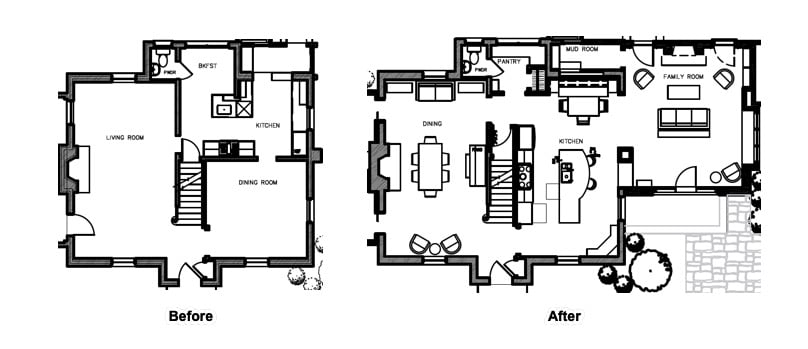 Good kitchen design allows guests to mingle before dinner as tapas or a plate of your aunt’s artichoke dip is coming out of the oven.
Good kitchen design allows guests to mingle before dinner as tapas or a plate of your aunt’s artichoke dip is coming out of the oven.
The Right Layout Makes the Kitchen Design Succeed
A good kitchen layout is a balance between the limits and possibilities of the space. Finding that balance will take some creativity, especially in an older home. You want to blend the kitchen space seamlessly with the architecture and design elements in the rest of the home. With the right design-build partner, layout challenges can be transformed into the livable, workable heart of the home you want your kitchen to be.
Learn about how to approach a kitchen design and remodeling project by downloading The Definitive Guide to Kitchen Design & Remodeling Success. If you are considering a home renovation, please feel free to schedule a home renovation discovery session with Gilday today.
8820 Brookville Road,
Silver Spring, MD 20910
© Gilday Renovations 2025
info@gilday.com



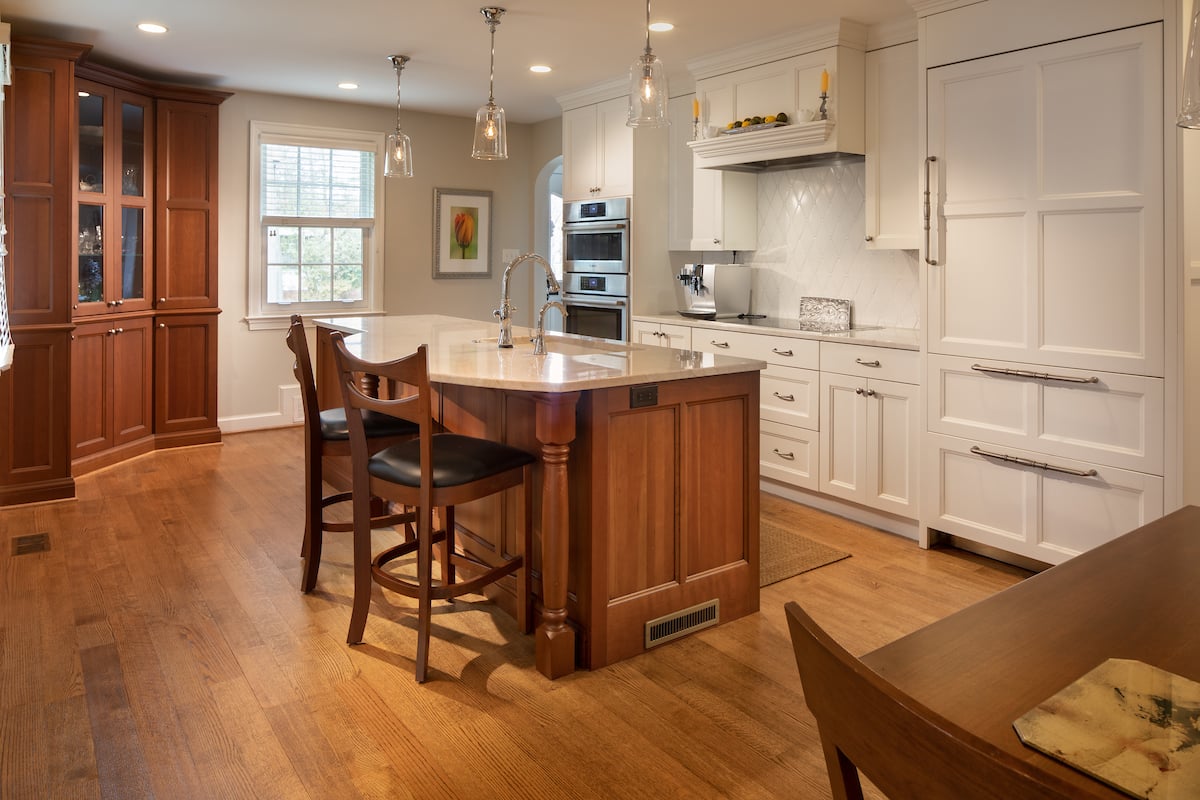
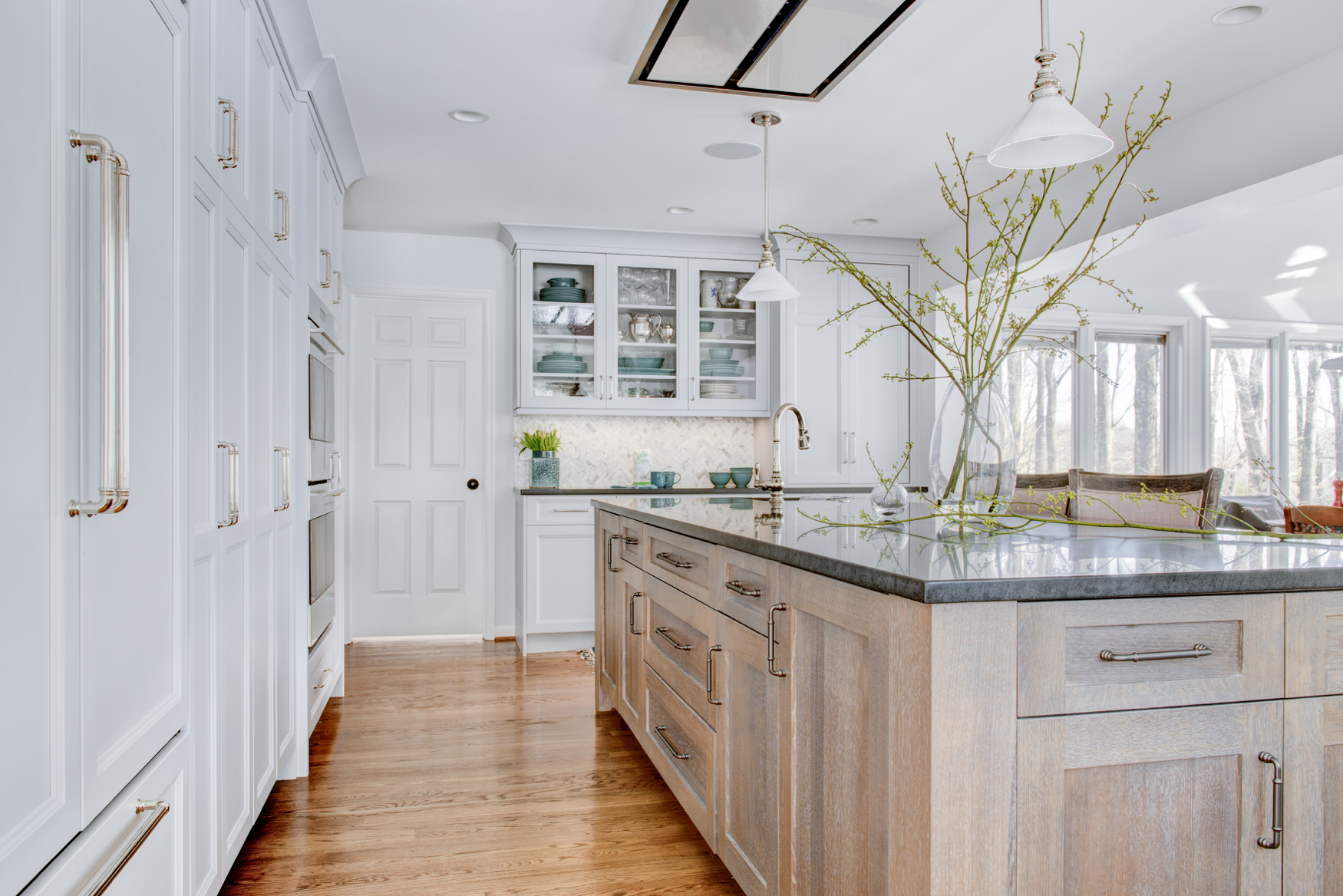
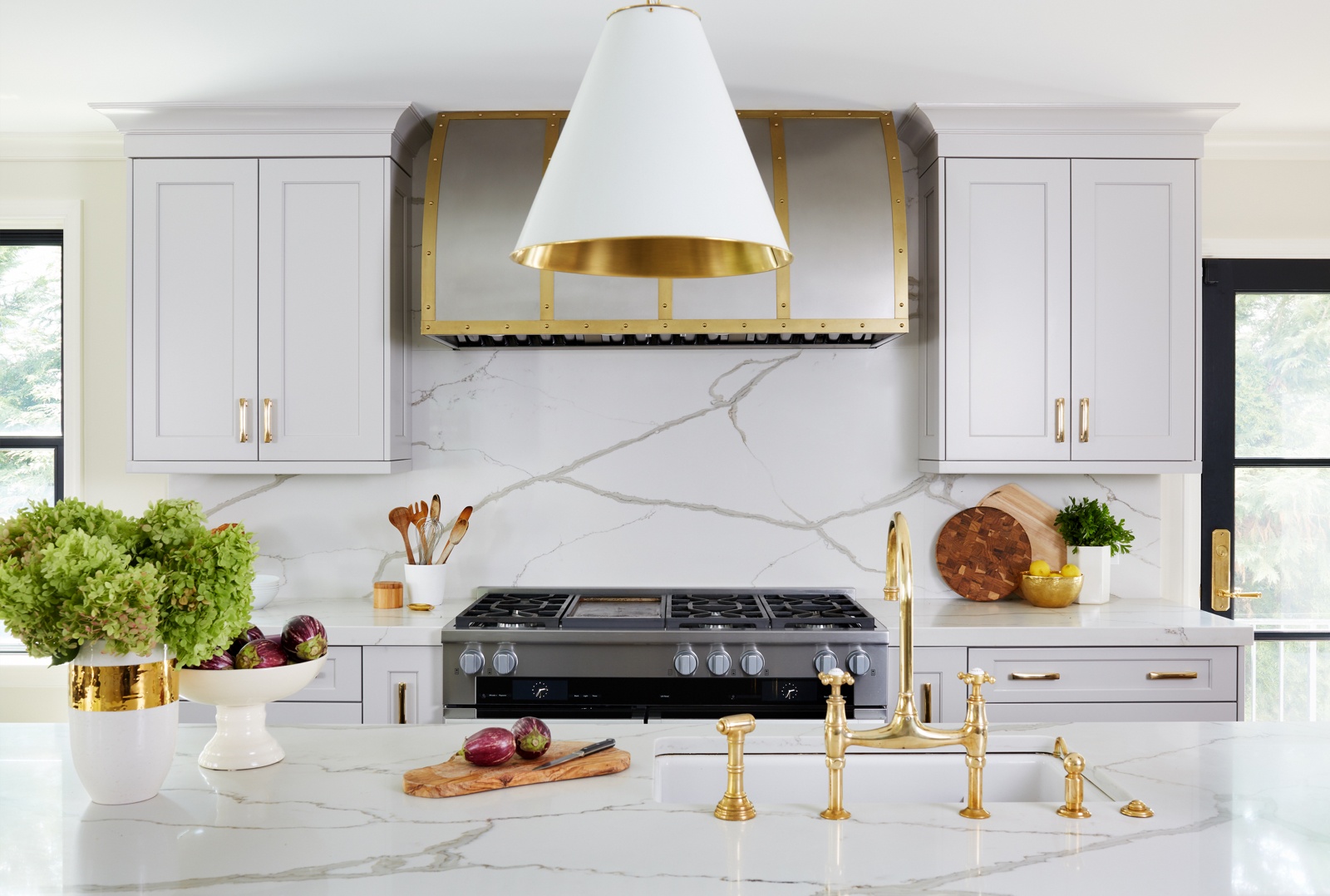
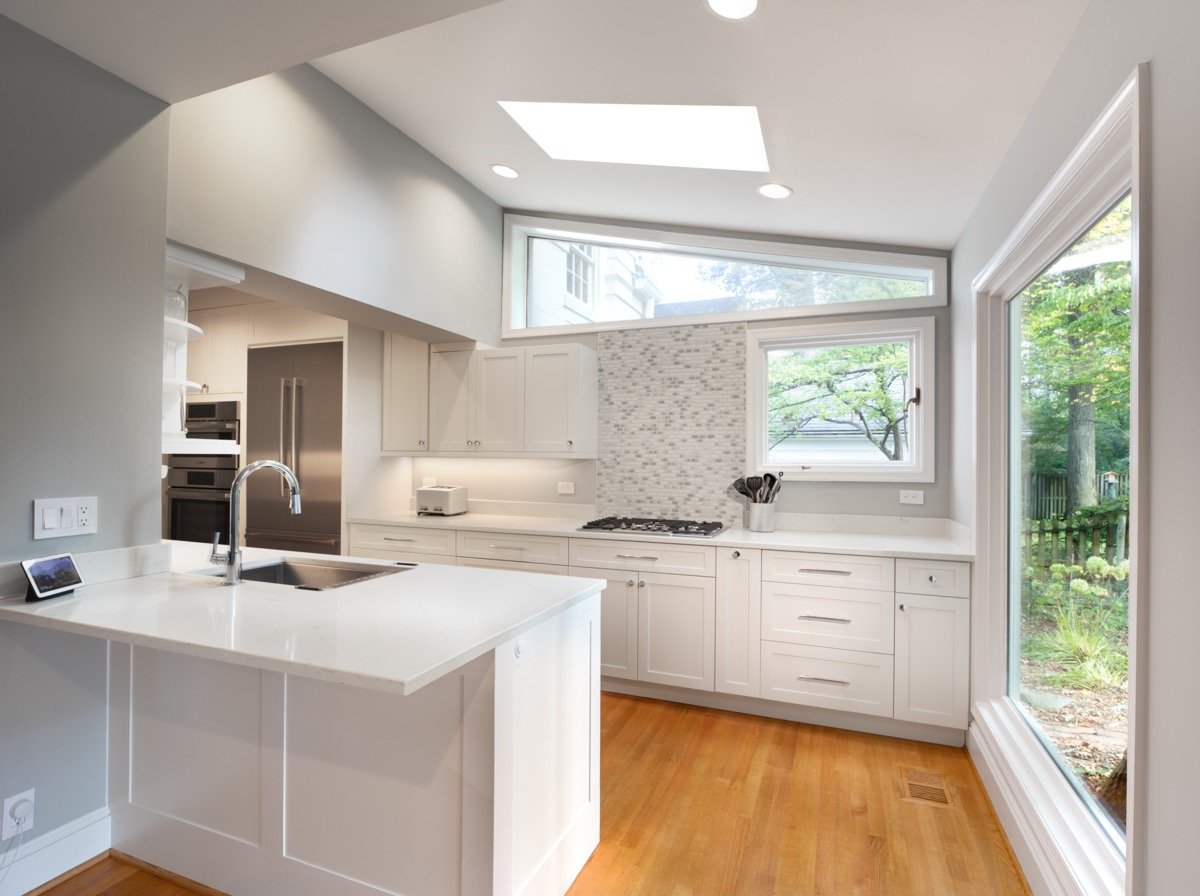
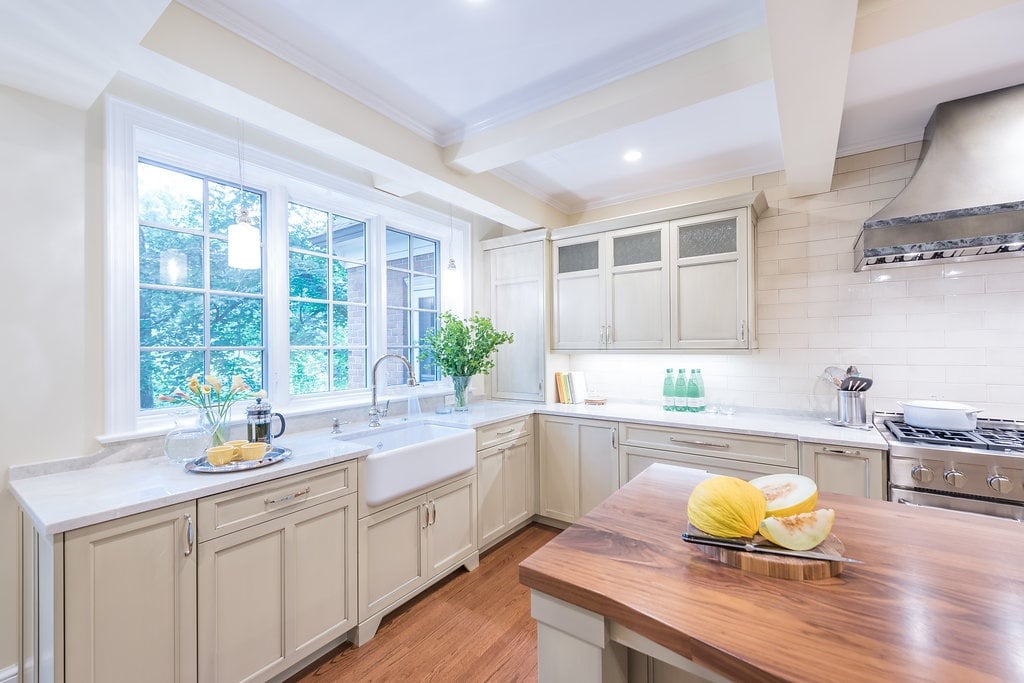
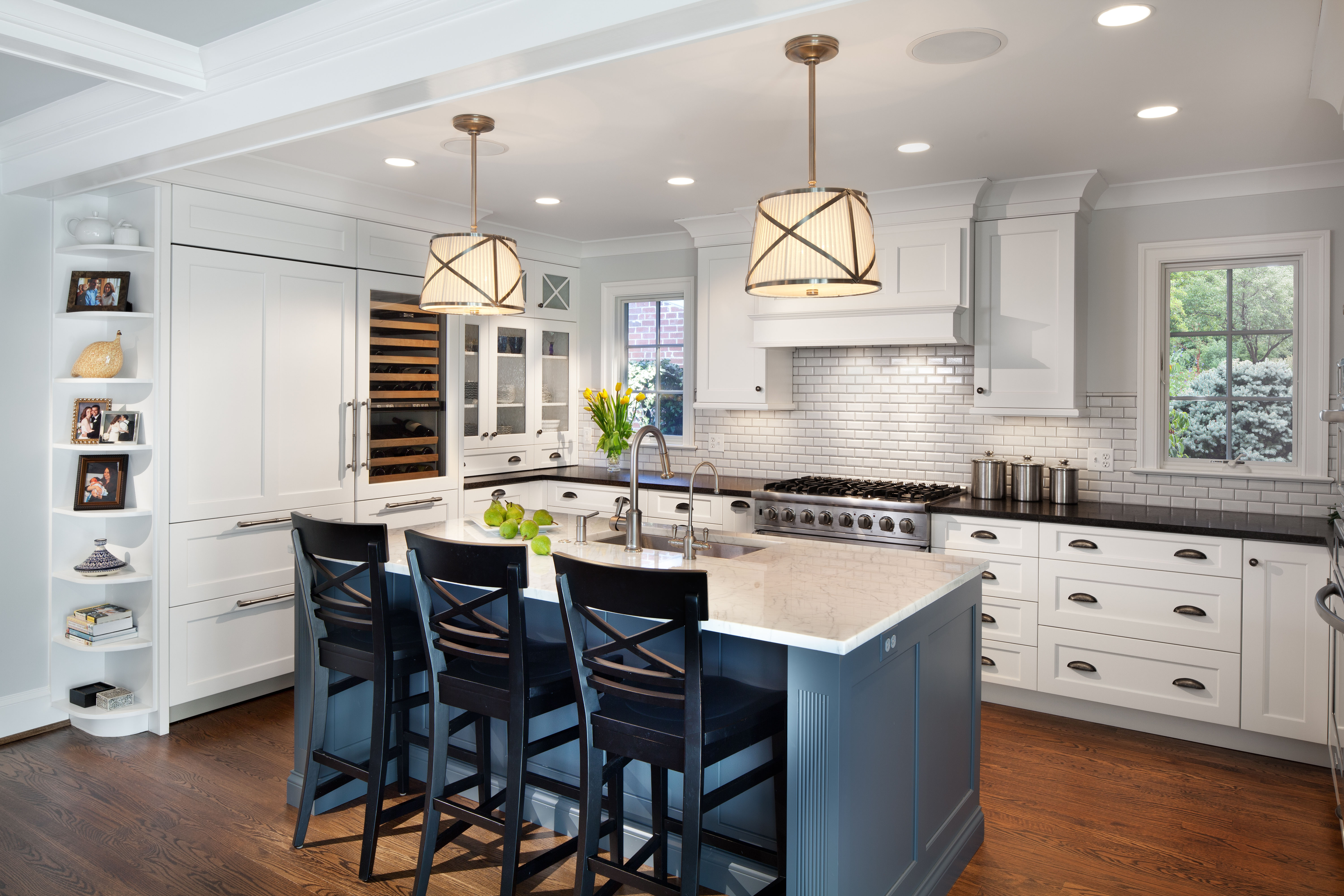
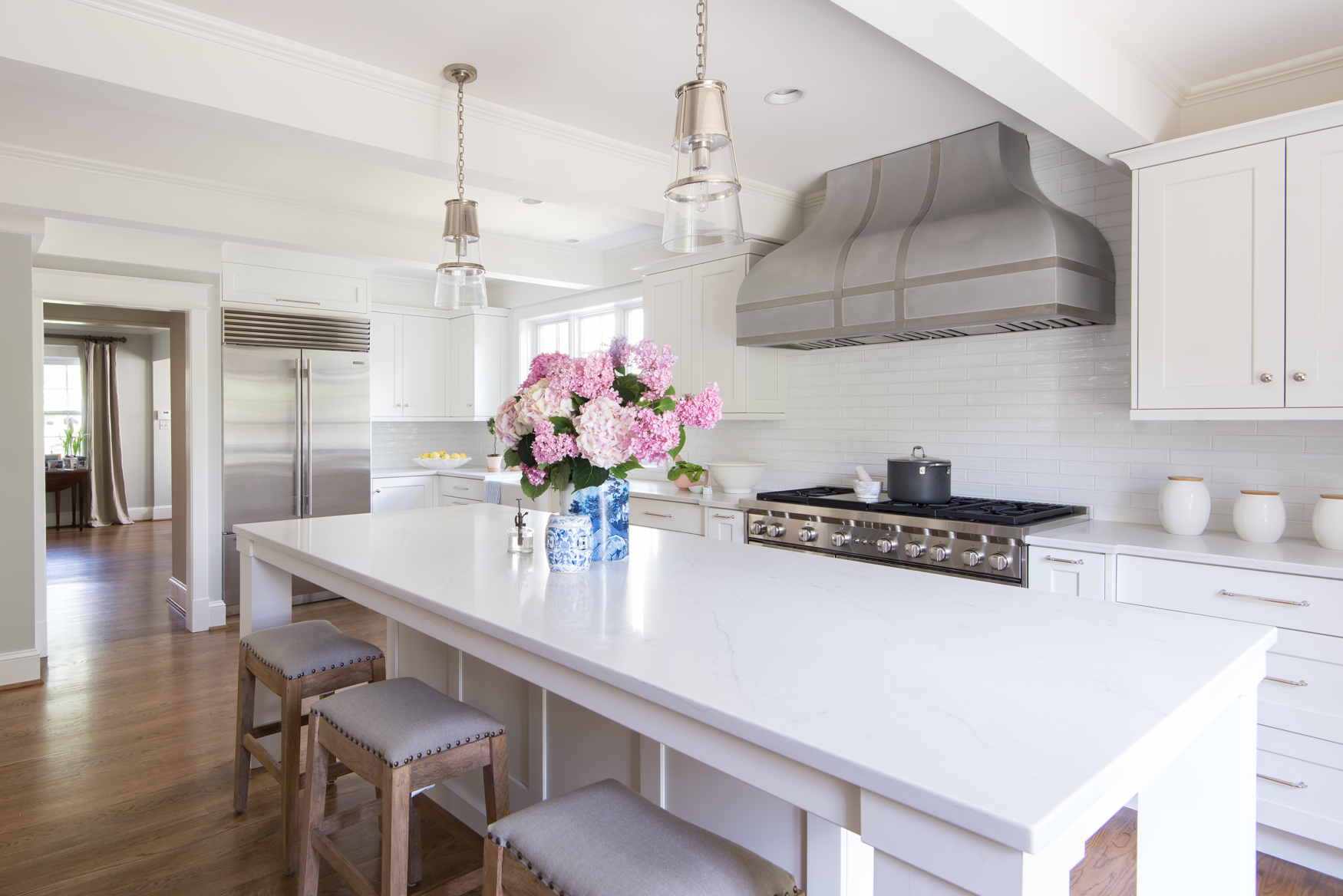
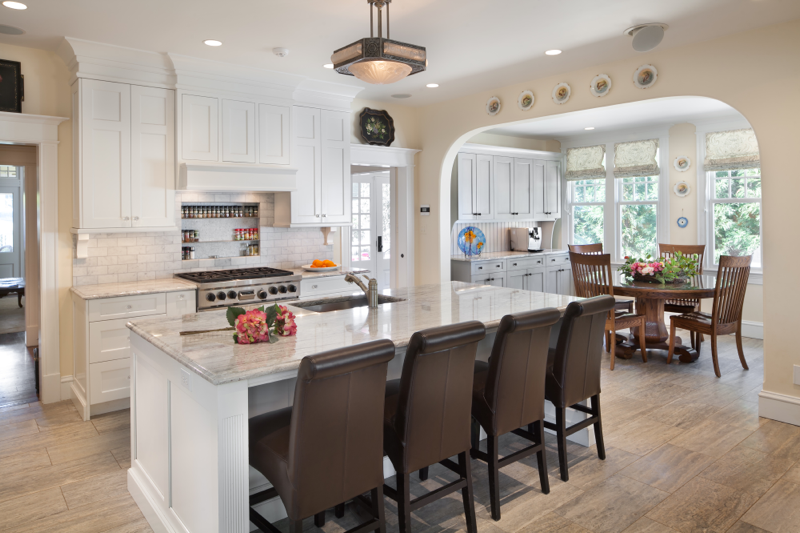
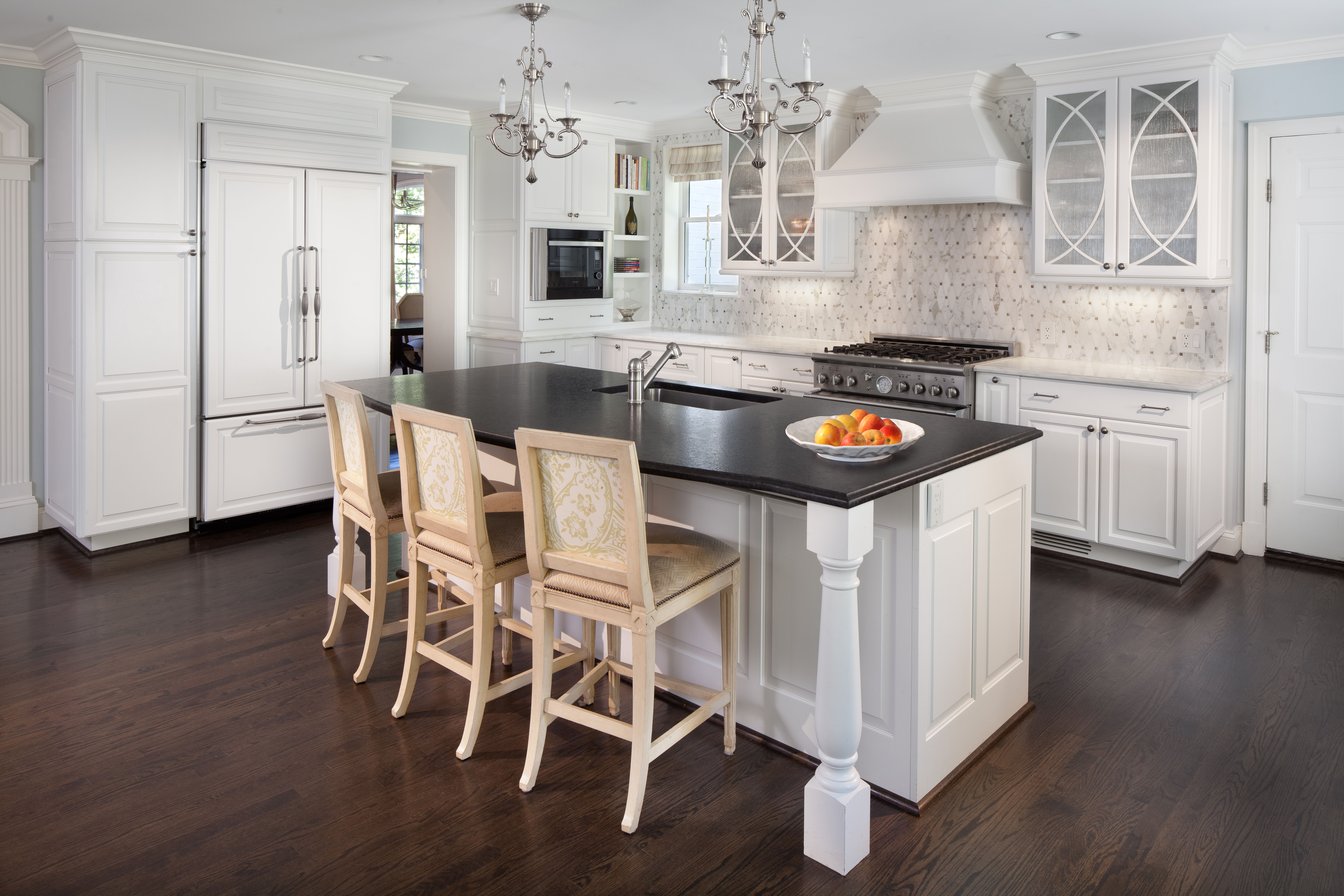
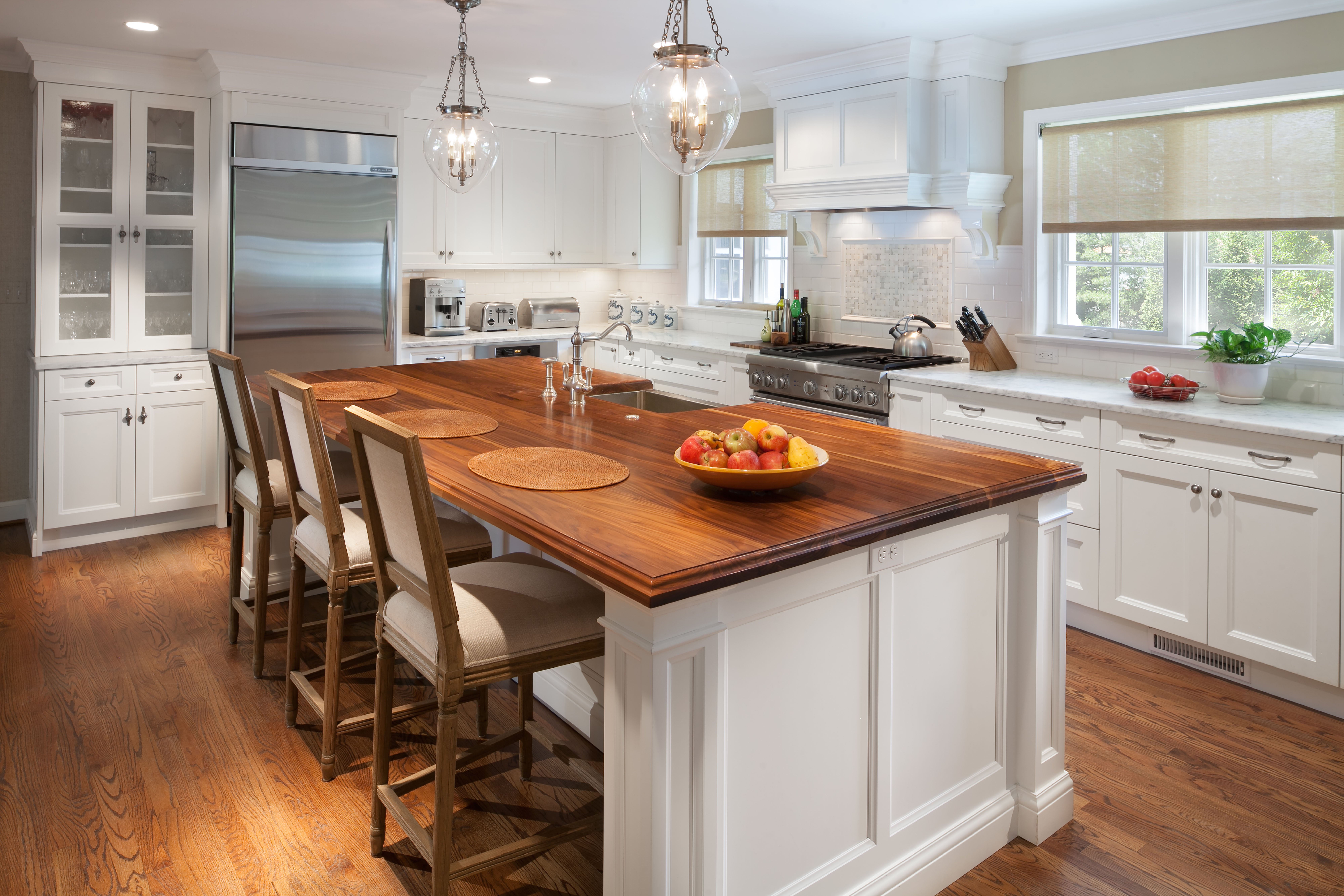
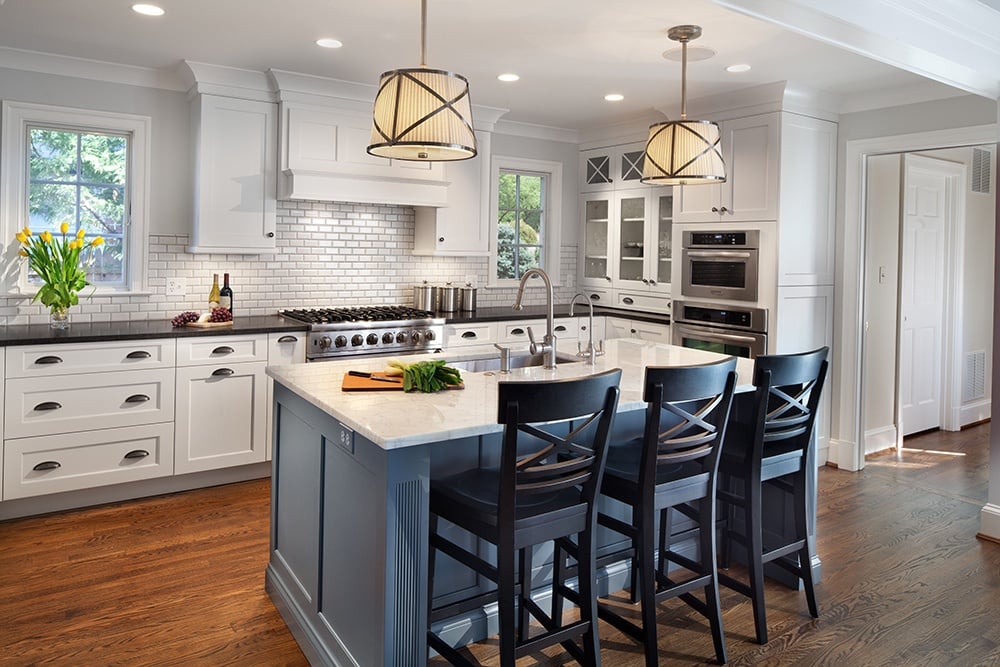
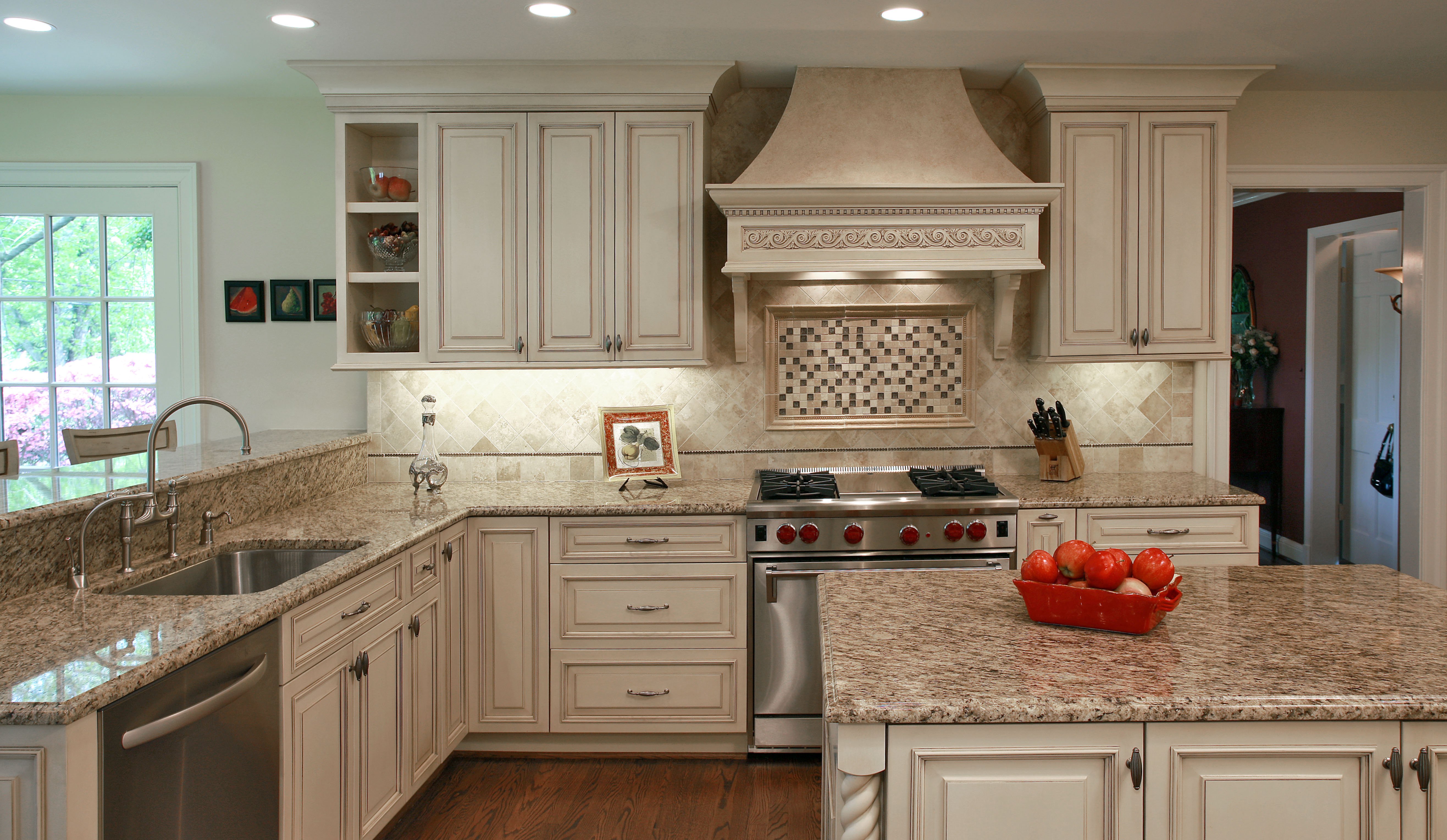
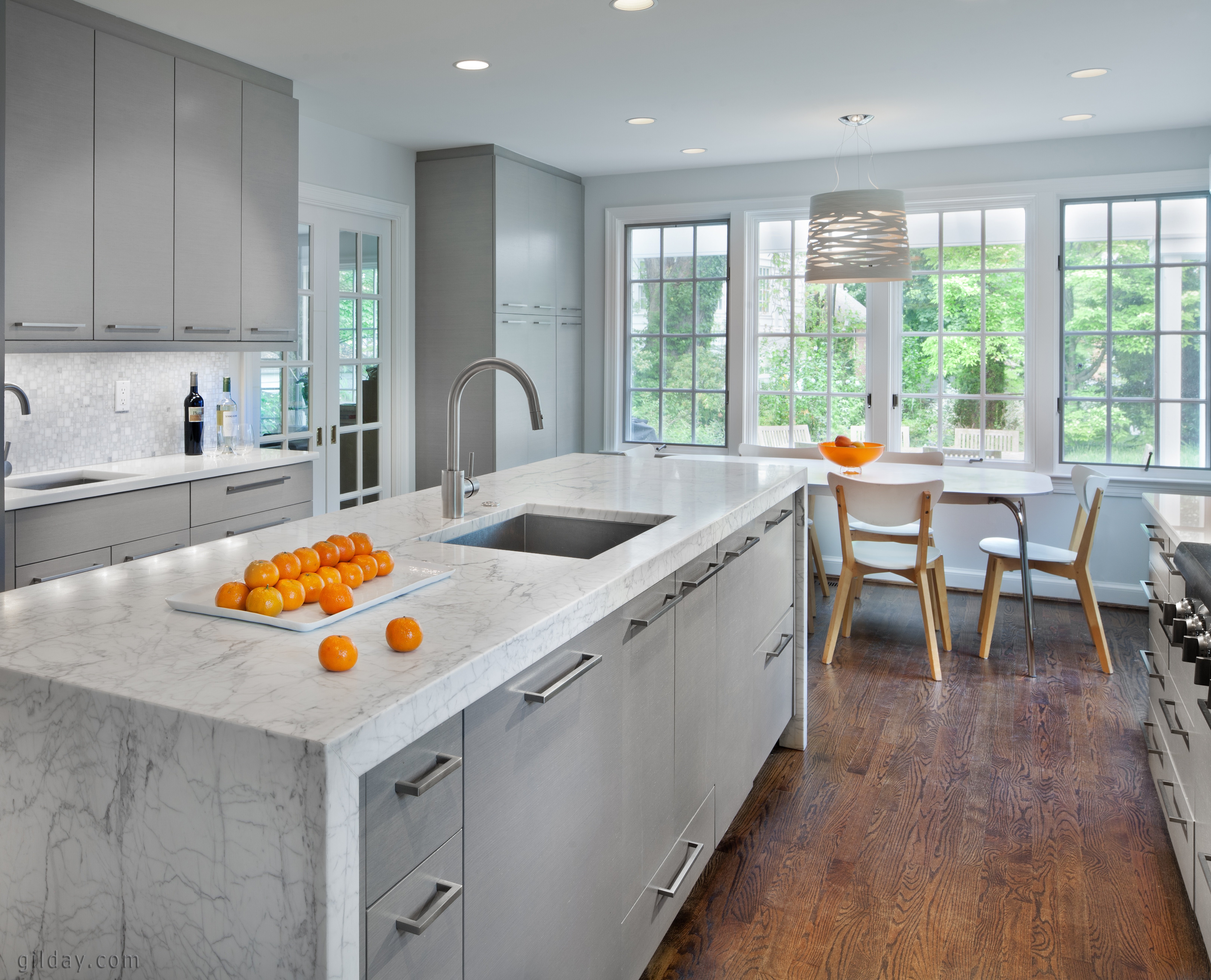
.jpg)
.jpg)
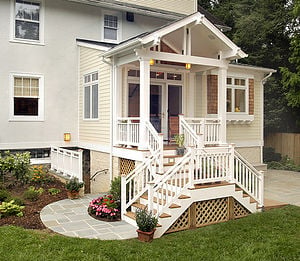
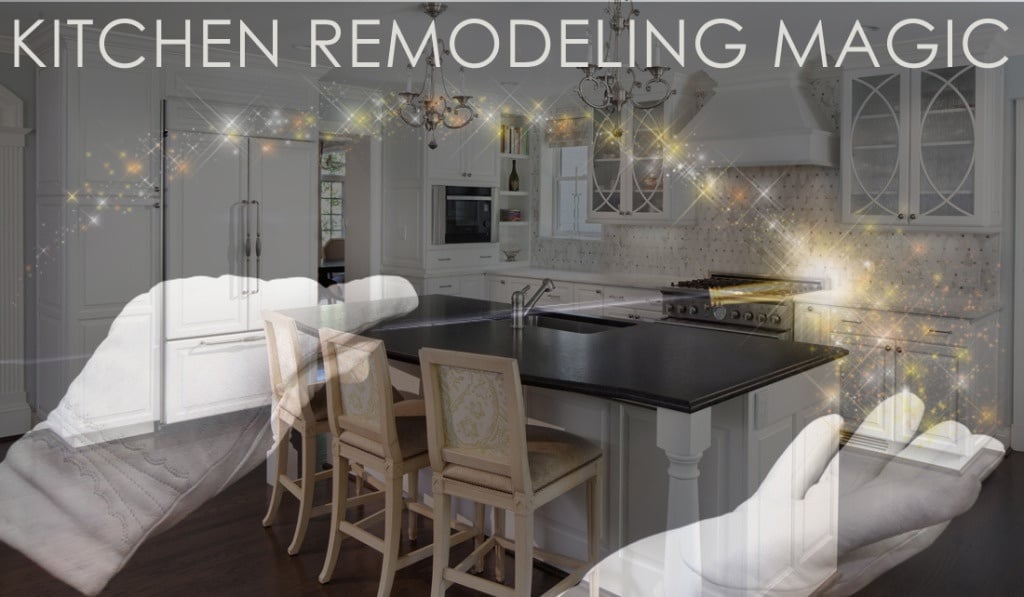
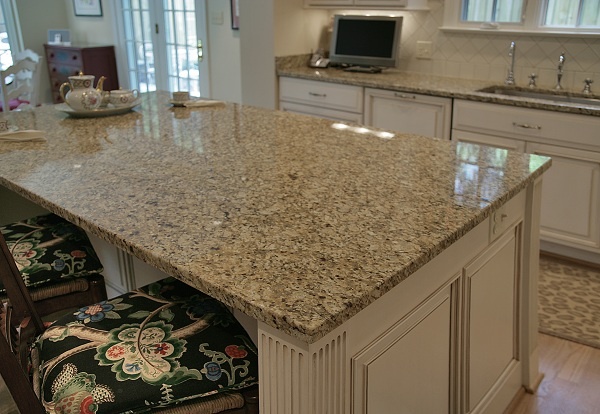
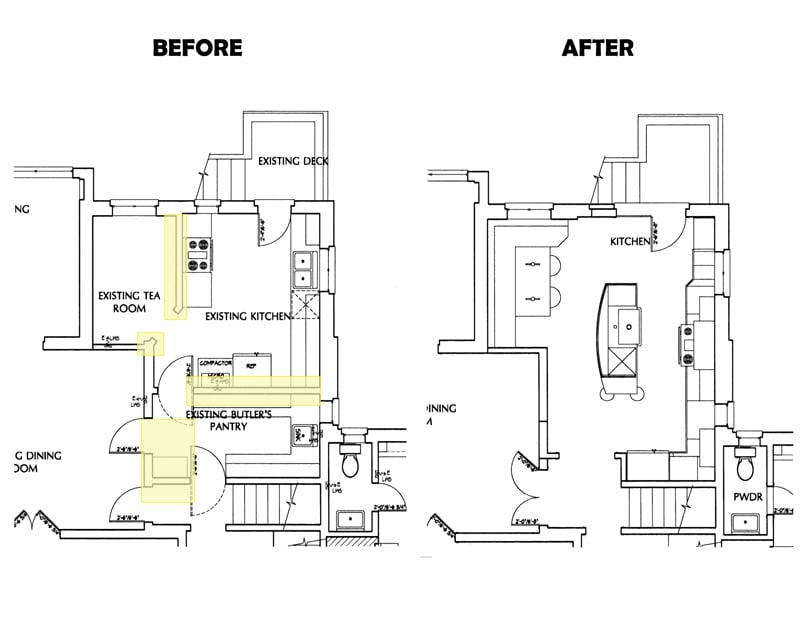
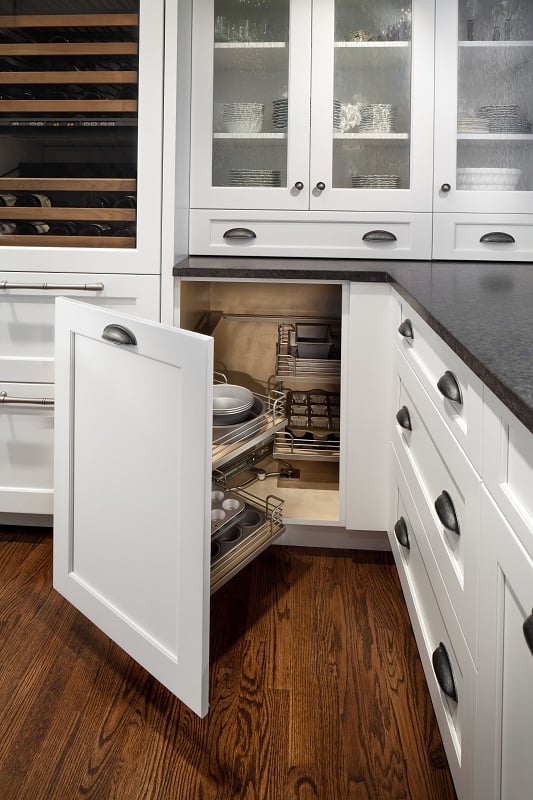
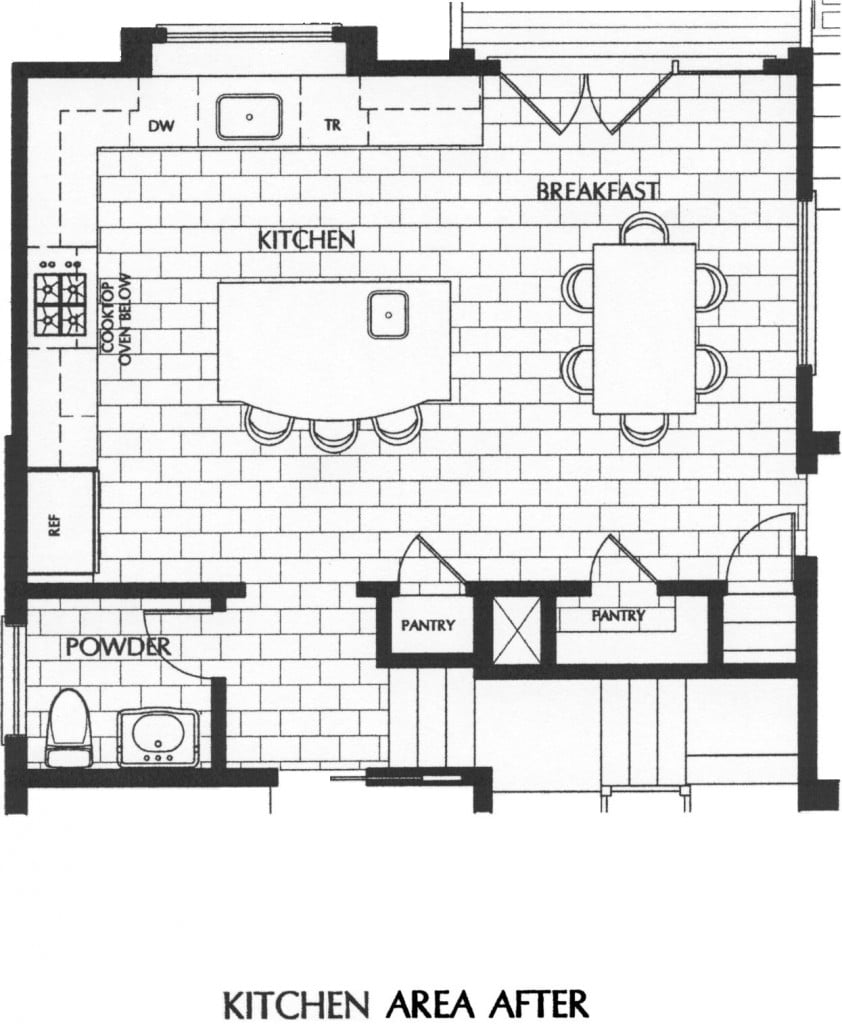
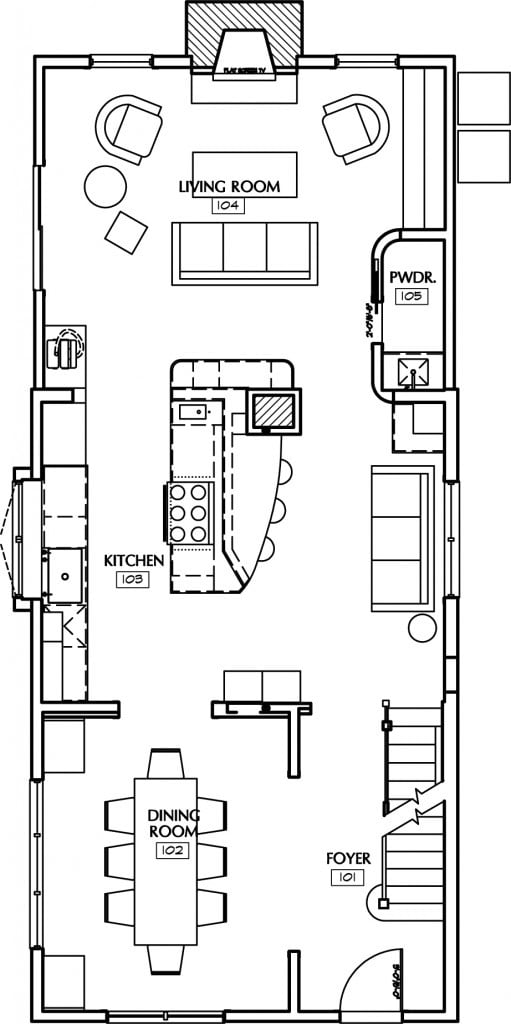



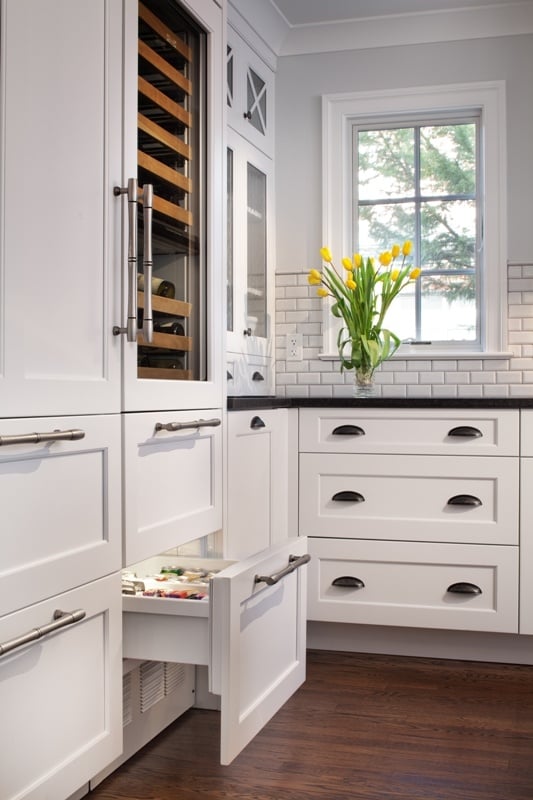
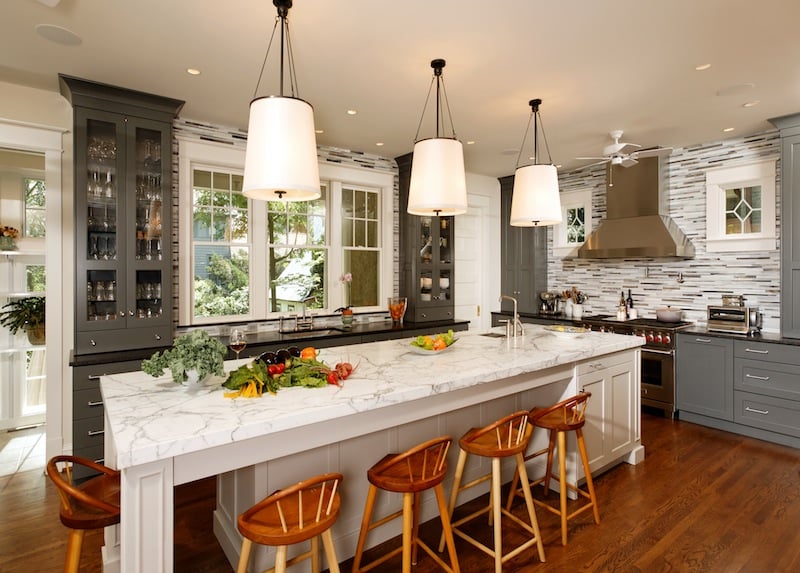
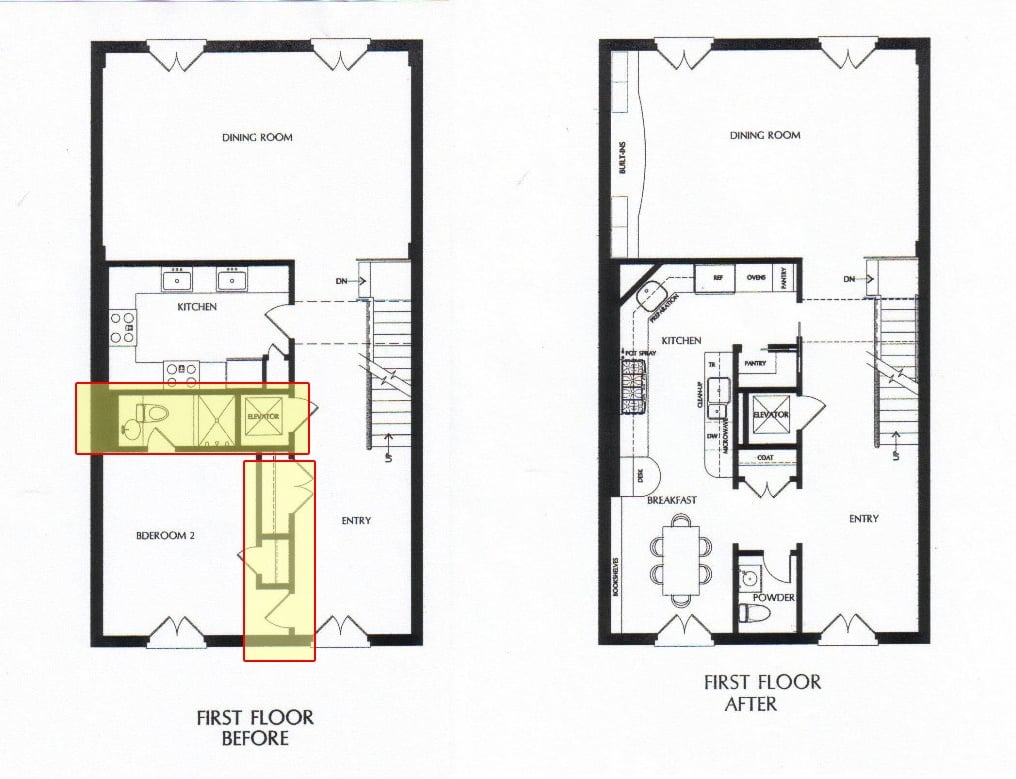
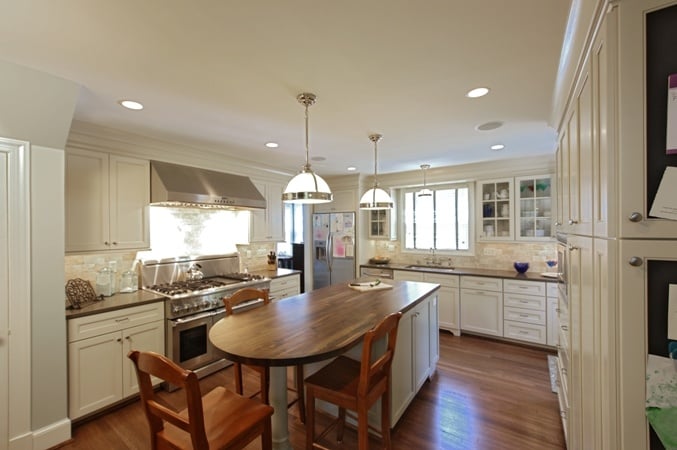
Leave a comment